A change of plan this week, to celebrate the first cirl bunting to sing in Sussex for almost thirty years. 🥳
The simple song of the cirl bunting is reminiscent of a sewing machine, or a hand-held scanning device from Star Trek.
It’s not unlike the yellowhammer’s more familiar little-bit-of-bread-and-no-cheese, but without the ‘cheese’ at the end.
Though easy to hear just across the Channel and through much of continental Europe, it’s a rare sound in England.
Cirl buntings were commoner here in the recent past, at least in southern parts.
First recorded in Devon in 1800, they seemed to like what they found in early 19th century England.
According to Birds Britannica:
By the second half of the nineteenth century cirl buntings bred in London suburbs such as Wembley Park and Wimbledon Common, while in parts of the Kent chalk downs it was said to replace the yellowhammer as the most numerous bunting.
It was equally common in Hampshire, where W H Hudson referred to it as ‘the village bunting’. It was also discovered to breed widely in the Midlands.
Their numbers in the UK seem to have peaked in the 1930s, when there were populations as far-flung as North Wales and Yorkshire.
But then their fortunes turned, so rapidly in fact that by the late 1980s they were lost again everywhere, except to the region of south Devon where they had first been found some two centuries before.
Just 118 pairs were counted in 1989. (My own decision to go to university in Devon in the mid-1990s was not wholly uninfluenced by the presence of these surviving birds.)
The fact that we can now refer to the population of 1989 as a low point, rather than another checkmark on the slide to extinction, is thanks to the efforts of conservationists and landowners.
Cirl buntings were hit especially hard by changes to some farming practices that have also impacted many other species: the loss of winter stubbles and the seeds they afford, more intensive management of pasture, leading to fewer insects, and the removal of hedgerows and scrubby areas that provide nest sites and shelter.
With action on these factors around the core areas of the remnant population, the number of cirl buntings has been able to grow again.
Due to this, and to the relocation of young birds to other suitable areas, well over a thousand pairs of cirl buntings can now be found breeding, from Cornwall to Dorset.
Is the bird discovered singing on the South Downs close to Brighton last week a wandering West Country bunting? Or a visitor from the continent?
Either way, it’s the first to be recorded in the county this century, and a sign of possibilities.
The global population of cirl buntings is around two million birds, found mainly across the southern half of Europe, west to Turkey and south to North Africa. A few thousand birds exist in New Zealand, descendents of those introduced in the nineteenth century.
Find out more about the ecology of the cirl bunting in the UK at the website of the British Trust for Ornithology.
More cheese: Yellowhammer
🌏 Link of the week
The Encyclopedia of New Zealand: Introduced land birds
The cirl bunting and yellowhammer are among one hundred and thirty bird species brought by people from elsewhere in the world, mainly Europe, to New Zealand.
They’ve had mixed success and a variety of consequences, as clearly explained on these pages.
(This one’s for you, Frank!)
Thanks for reading and listening. I’m a little late with this one, apologies... there will be another Shriek at the beginning of July to make up.
This is instalment #23 in 2024’s cycle of Shriek of the Week. You can catch up with Swift, Red-backed Shrike, Goldfinch, Tree Pipit, Blue Tit, Reed Warbler, Cuckoo, Willow Warbler, Swallow, Green Woodpecker, Blackcap, Nuthatch, Starling, Chiffchaff, Collared Dove, Wren, Dunnock, Great Spotted Woodpecker, Robin, Great Tit, Song Thrush and Blackbird.
June is the last month until 2025 that there will be weekly posts, but monthly Early Bird Club Zoom sessions continue every first Saturday through the year for paying subscribers, as does access to the full archive.
Thanks to Jude B for your recent support. 🦩
~ Charlie
Media credits
Cirl bunting audio recorded by Laurence Shove, distributed via the British Library
Cirl bunting image by Frank Vassen reproduced under Creative Common licence CC BY 2.0, via Wikimedia Commons


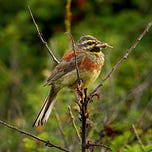


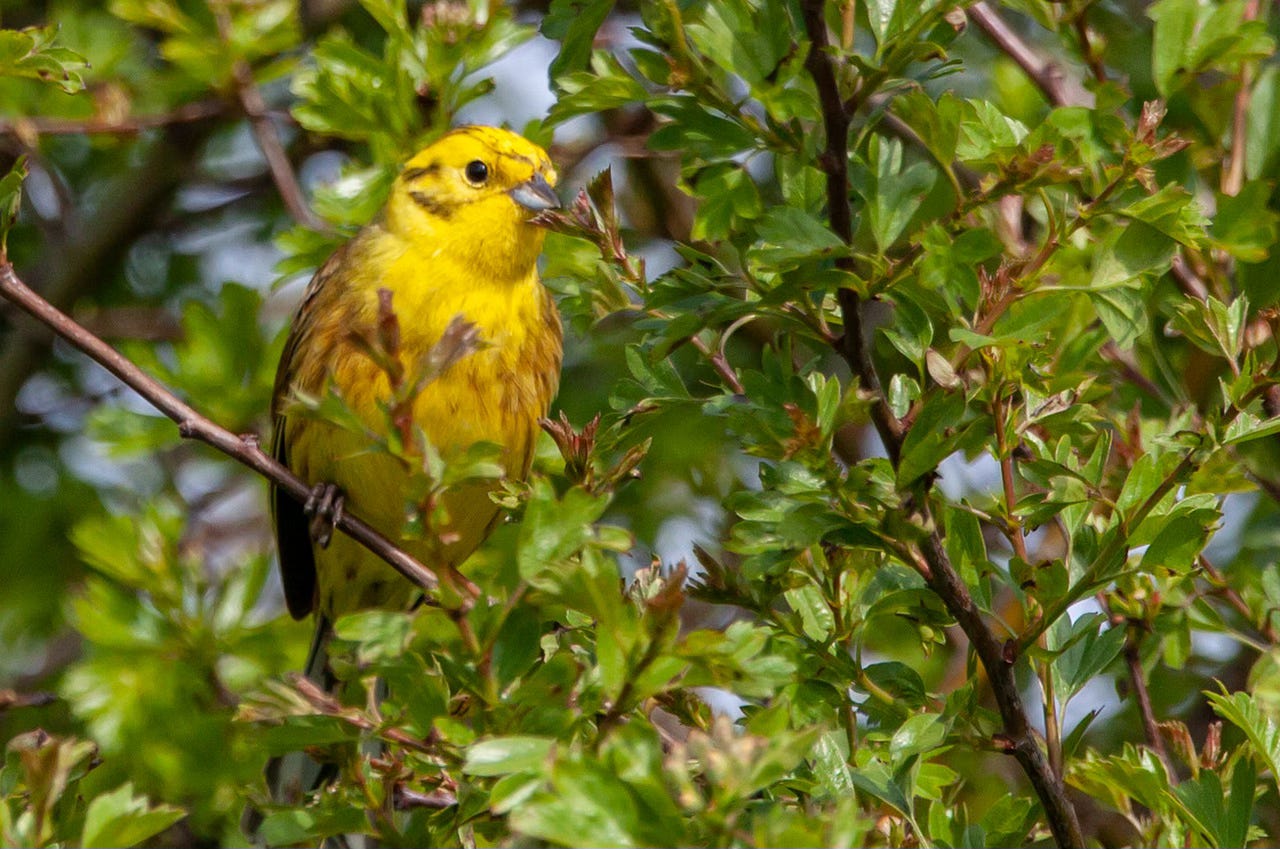


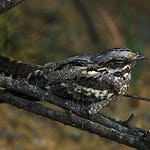
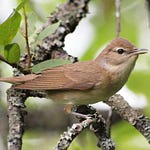

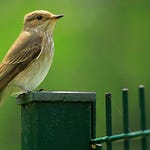


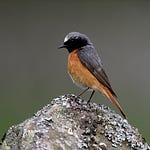
Share this post